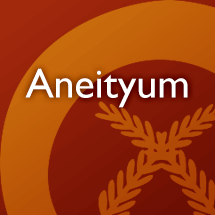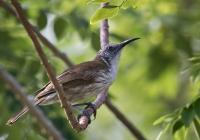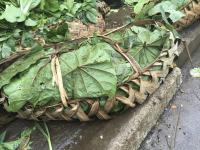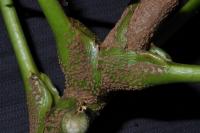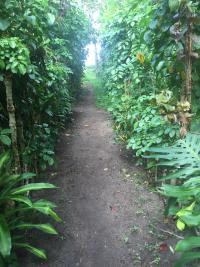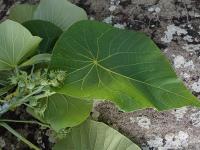An example search has returned 100 entries
aihon
v. to spit on leaves; to chew leaves for sickness
bookmarkemilmat
adj. green, blue
bookmarkincesmetaig
n. kind of sugarcane
bookmarkincetevak
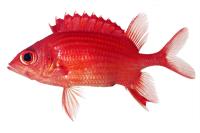
n. Pink Squirrelfish
Example: Photo by Jeffrey T. Williams / Smithsonian Institution, License: CC BY-SA 3.0 via Fishes of Australia
bookmarkincispev
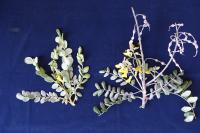
n. tree, 3 m tall (collection: Gregory M. Plunkett #3547)
Example: This plant is for medicine to treat a spiritual condition related to the coral snake that is the seawater spirit. When a woman is pregnant, some times she gets sick, so use this leaf with 2-3 other unspecified leaves and mash them together, squeeze the juice into a small cup (bamboo), wave around the woman’s body, and then put a few drops onto her head and body, then she drinks the rest. This will help heal her sickness. This treatment can be used for men who have a toothache from eating too much fish--the seawater spirit of the coral snake makes the tooth hurt. It is used in the same way as for a pregnant woman. If the pain from the toothache is really from the seawater spirit, then this will cure it; if not, it will not help.
bookmarkinharisihau

inhelegaij
n. kind of sugarcane; also "nalgaij"
bookmarkinhulec ~ iɣleɣ

[inhuleɣ] n. Yellow-throated White-eye
Example: Illustration by John Gerrard Keulemans / Wikimedia Commons, License: Public domain via Wikimedia Commons
bookmarkinhupnan
n. first fruits
bookmarkinlop̃ot

inmayinpak
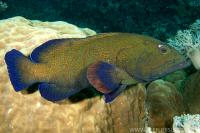
n. Peacock hind
Example: Photo by Andrew J. Green / Reef Life Survey, License: CC BY-A 3.0 via Fishes of Australia
bookmarkinmereijcil
n. kind of breadfruit
bookmarkinmohtan nohos
n. kind of taro
bookmarkinmoijeuv adpoig
intal eteuc
n. the name of a plant with a white flower; a lily
bookmarkintate a nelgo waj

interi amu
n. kind of taro
bookmarkintiklan cai
n. tops of branches
bookmarkinvid
n. two days ago or two days hence
bookmarkmasoa
n. arrowroot
bookmarknacñanp̃aiñ
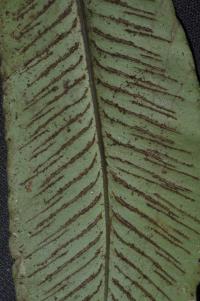
nadiat meto
n. the middle of the forenoon
bookmarknahaigjopdak
n. kind of plant, grass, or fern
bookmarknahaijcai
n. kind of plant, grass, or fern
bookmarknahi ateuc
n. a plant with white flowers; a lily
bookmarknairum̃an

naledpen

nalgaij
n. kind of sugarcane; also "inhelegaij"
bookmarknamou
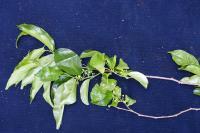
natiñpece
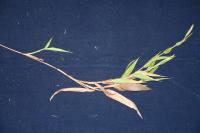
nawod

n. tree, 12 m tall (collection: Gregory M. Plunkett #3641)
Example: 1. The wood of this tree is used to make temporary houses, for example, when making a garden by the river. 2. The wood can be sawn into timber. 3. People collect red leaf and put under tongue when want to talk about conflicted issues such as a dispute to make their argument stronger.
bookmarkneaig aged
n. a spotted coconut
bookmarknecjopdak
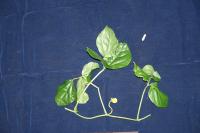
n. scrambling vine, growing in coastal strand vegetation. Flowers yellow. 1. Medicine: Smash leaves 1 handful, into cup and add a small amount of water to treat constipation—1 cup for children; 1.5 XX for adults. 2. Stomachache: same treatment, will clear bowel. 3. For leg sores, collect whole plant, put in water – a pool of water for 1 week, then use to dip sore as on leg into it for 10-15 minutes cure the sore. (collection: Gregory M. Plunkett #3437)
bookmarknecna p̃a
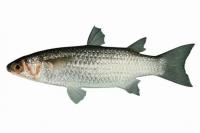
n. Largescale mullet
Example: Photo by ANFC, License: CC BY-NC 3.0 via Fishes of Australia
bookmarkneduon
n. a bone, a foot
bookmarknegejwaj

nekrolas
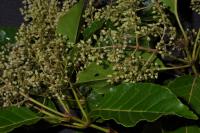
nelka
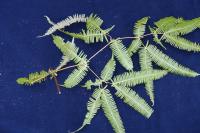
nemek
n. yellow leaves for making petticoats
bookmarknese uinman
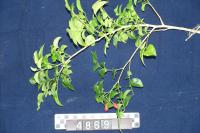
n. tree to 3 m tall, 20 cm dbh (collection: Michael J. Balick #4869)
Example: To treat toothaches, take a handful of leaves, boil them in 1 cup of water, take the warm liquid and leaves and wash or rinse the affected area as needed until pain resolves. The wood is used for carving and is yellowish in color. The stems are used to secure the outrigger to a traditional canoe.
bookmarkneudan tauoc nohos
n. the center sprout of the banana plant
bookmarknigiti
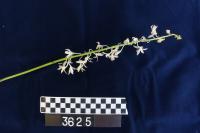
nijcel
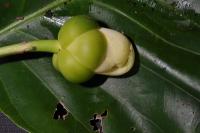
n. tree, 10-12 m tall (collection: Gregory M. Plunkett #4061)
Example: 1. When cooking "Naura" (freshwater prawns), the leaves are used to wrap them before they are roasted in a fire. 2. When making lap-lap (a traditional dish made of grated root crops), and the lap-lap leaf is unavailable (Heliconia sp.), use the large leaf of this species to wrap the taro.
bookmarknilcasau
n. the castor-oil plant
bookmarknilec

nilyat
n. the name of a tree, the leaves of which blister
bookmarknimtac
n. kind of tree
bookmarknipnyineuc
n. another name for "masoa"; arrowroot
bookmarknipʧinite
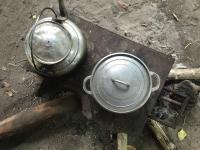
niriyau

n. Goldspotted spinefoot
Example: Photo by Mark Rosenstein / iNaturalist.org, License: CC BY-NC-SA 3.0 via Fishes of Australia
bookmarknisvahaijom
n. tree from which petticoats or skirts are made
bookmarknocirasjau
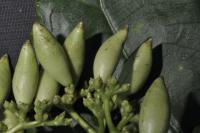
large tree, 13 m tall (collection: Gregory M. Plunkett #4052)
Example: 1. Considered to be a relative of textit{Morinda citrifolia}.
bookmarknofauhuan
n. kind of banana
bookmarknohmun wai
n. bank (of a river)
bookmarknohosma

nohu itai
n. fruit trees
bookmarknomotmot mese
n. hay
bookmarknoporo pora

nosocrei
n. kind of plant, grass, or fern
bookmarknuarin eptu
n. meadow
bookmarknuhonwei

nupsi itai
n. corn
bookmarknuwuneto

pehpahai
v.n. sail inside of reef
bookmarksemi
adv. down hither
bookmarktatalaha
n. kind of taro
bookmark